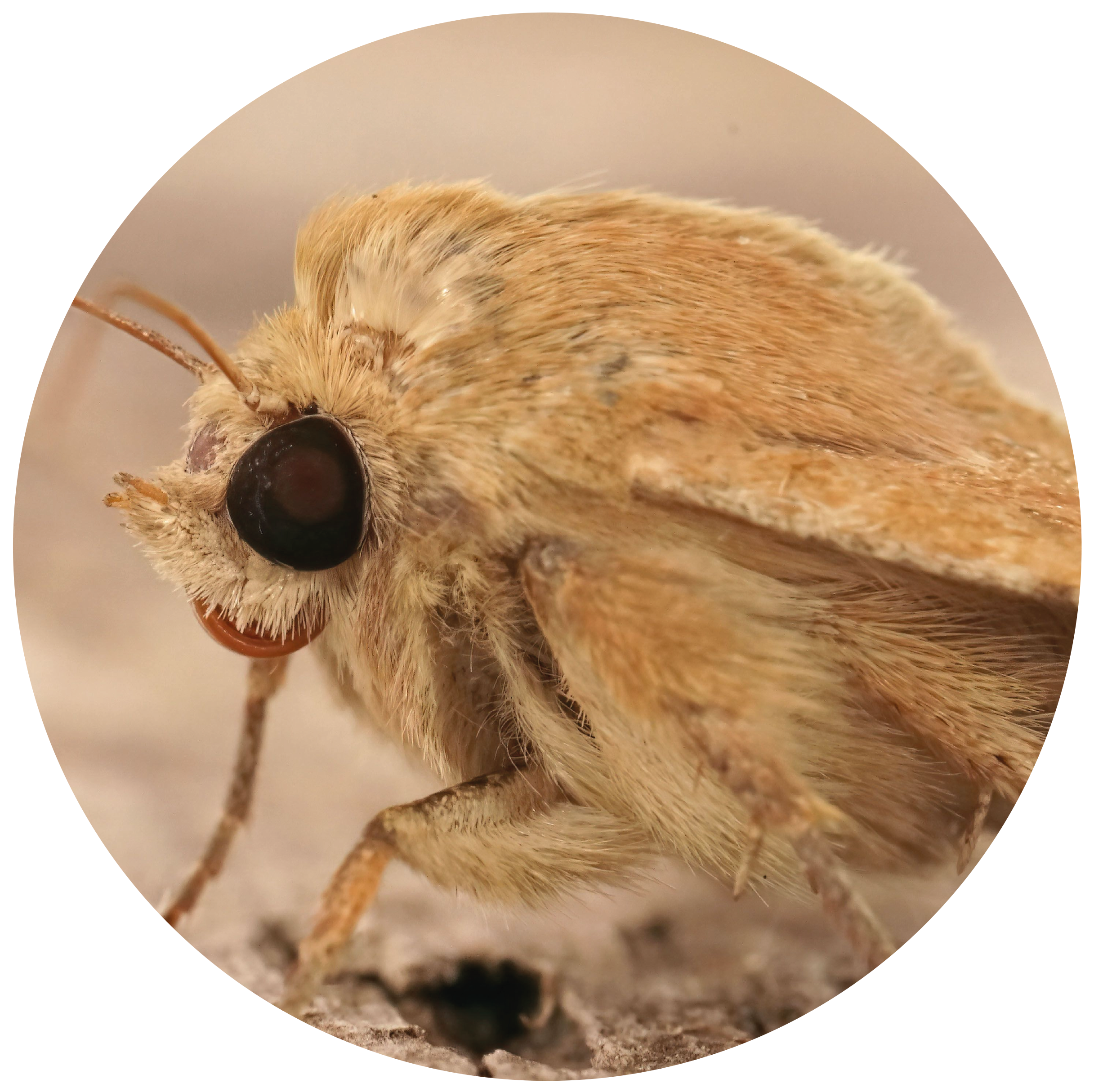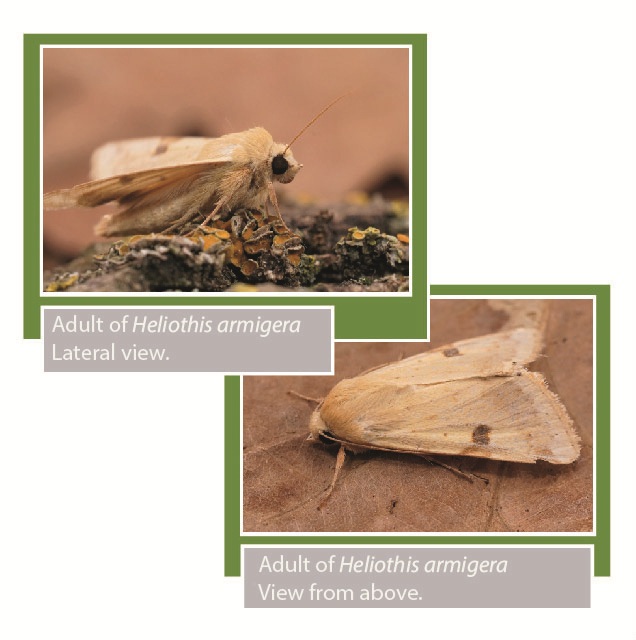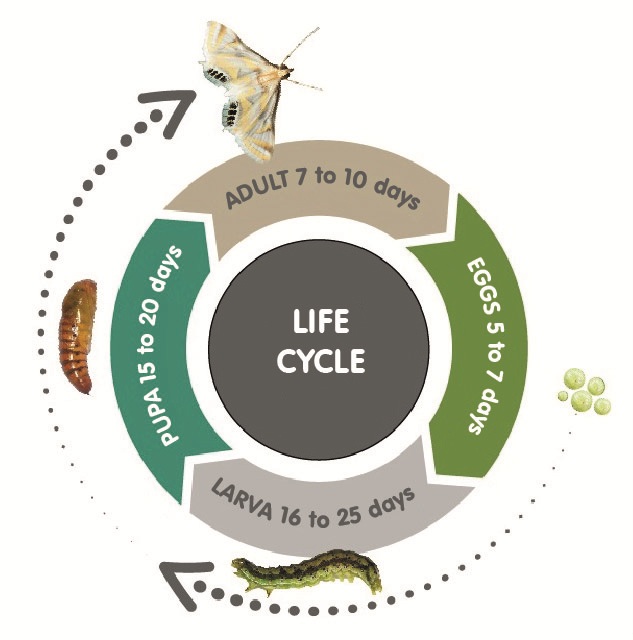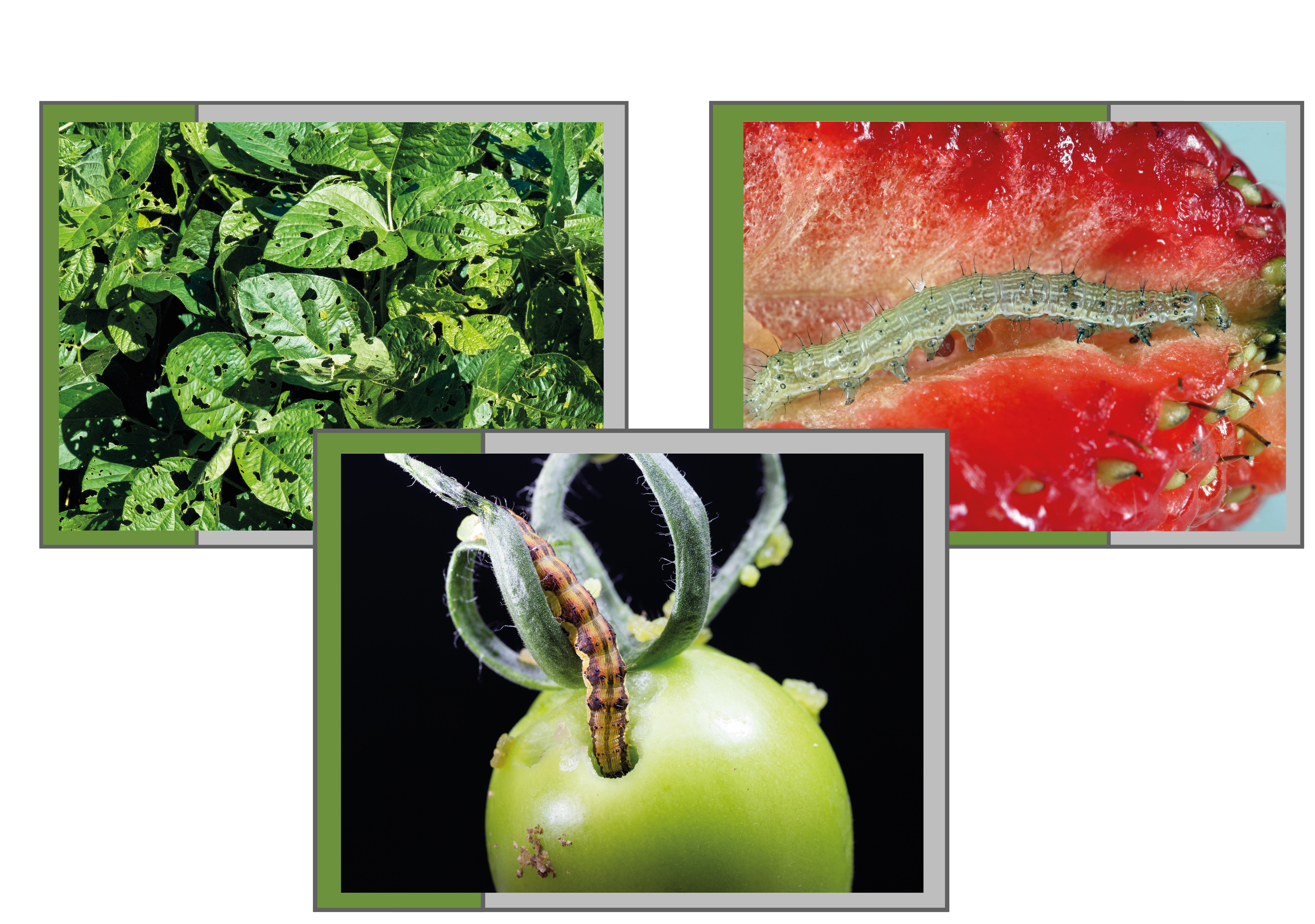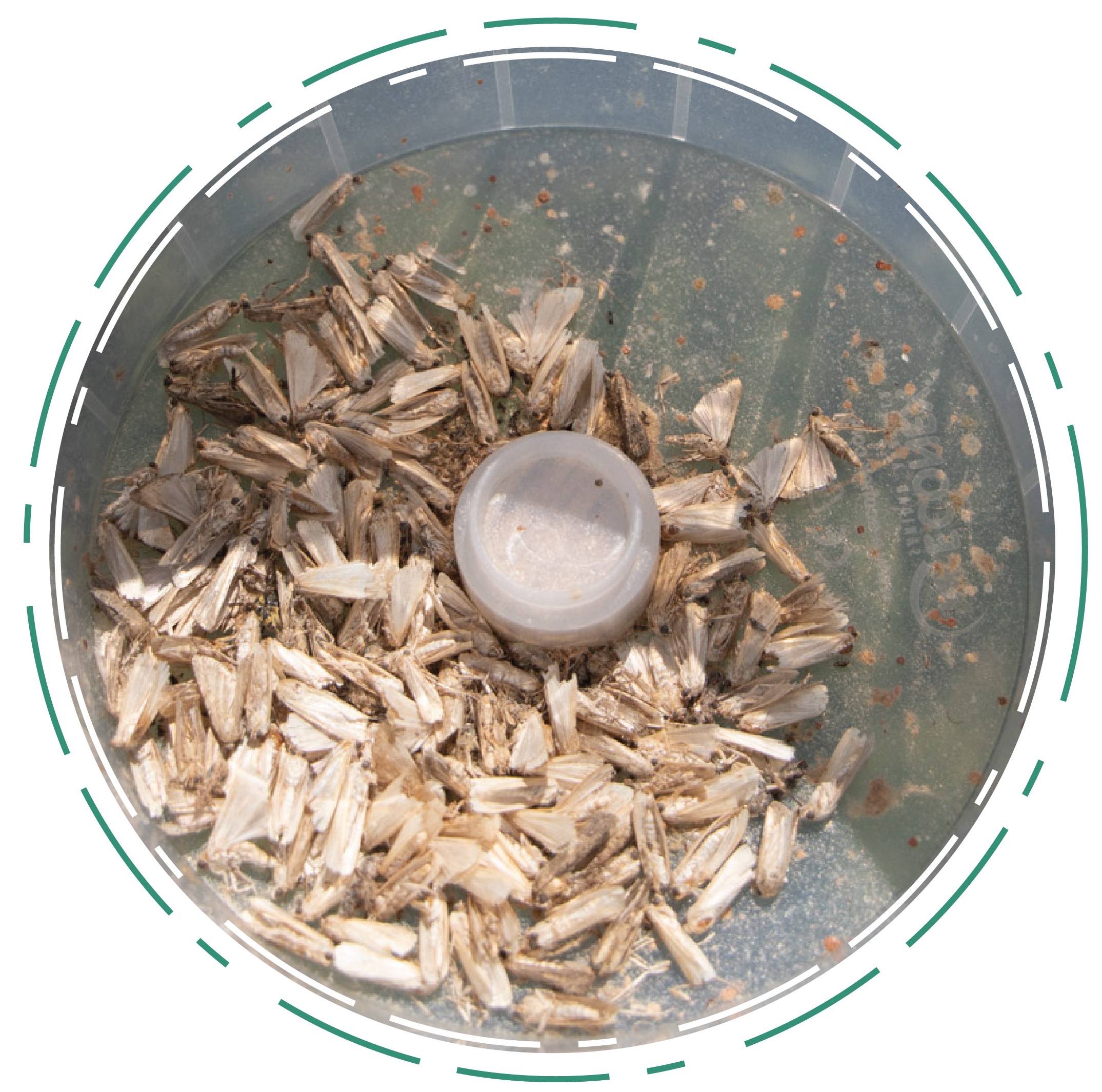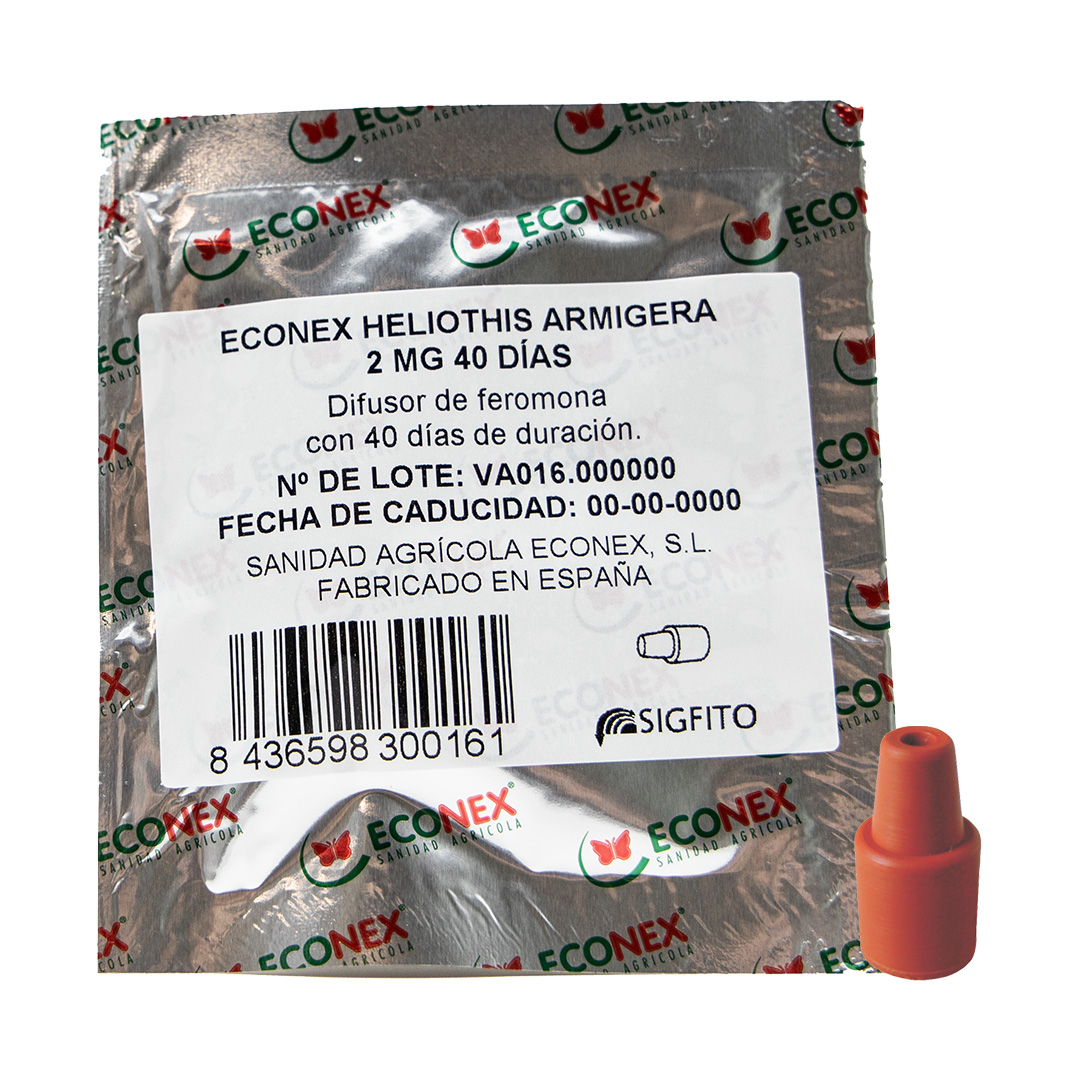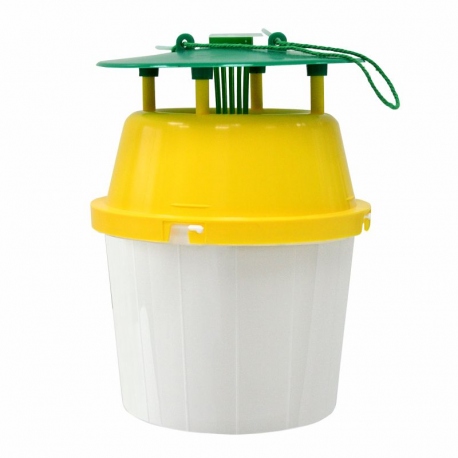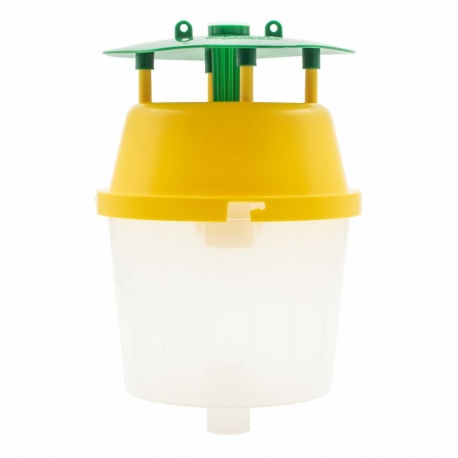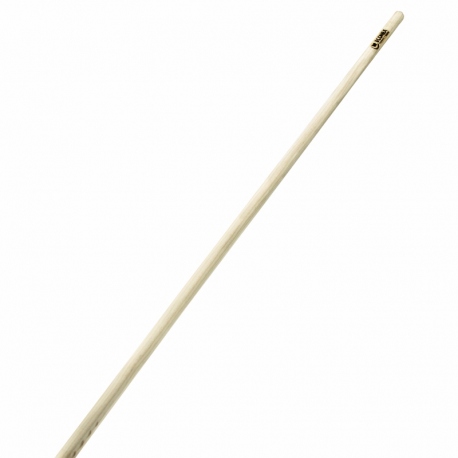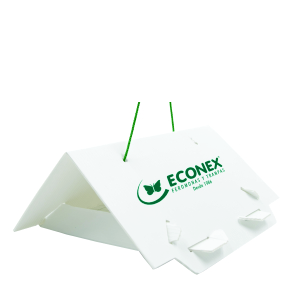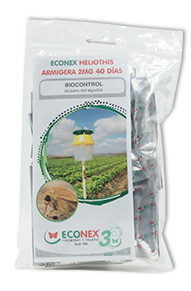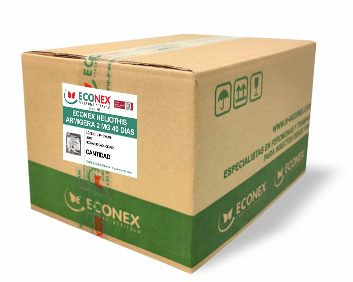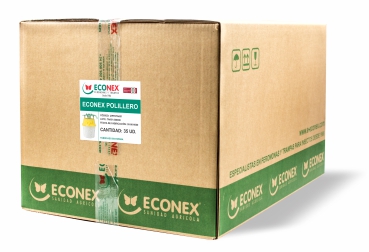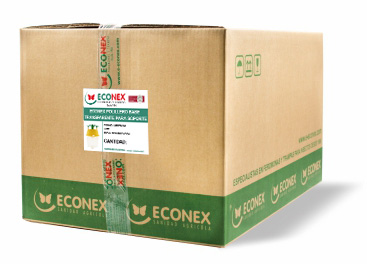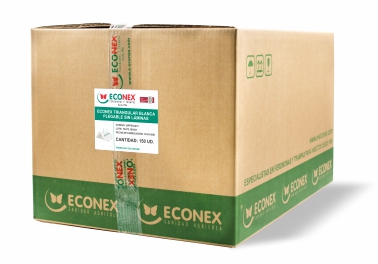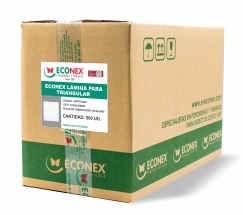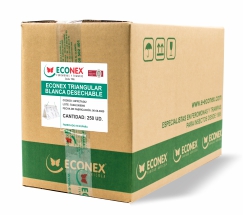Morphology
The morphology of Heliothis armigera varies throughout its life cycle, which includes four stages: egg, larva, pupa and adult (moth). The eggs are spherical and small, white or in a waxy colour, while the larvae, up to 40 mm long, vary in colour from green to dark brown or black.
Adult of Heliothis armigera
Eggs are usually found singly on young shoots and near flowers, fruits, buds or leaves. The pupae are green to brown in colour and burrow into the soil, where they undergo transformation before emerging as adult moths, which have a wingspan of 30 to 40 mm, with brown or grey forewings.
The complete cycle lasts 30 to 40 days, and the pest can have several generations per year, depending on climatic conditions. Adults, eggs, larvae and pupae can be found simultaneously. Its ability to adapt to different environments and its rapid life cycle make it a highly damaging pest for a wide variety of crops.
Life cycle of Heliothis armigera
Damages
Heliothis armigera polyphagous, which means that it feeds on a wide variety of plants. It attacks more than 100 plant species, including tomatoes, corn, peppers, cotton, sorghum, sunflowers, beets, cabbage, and carnations.
The larvae initially feed on flowers and leaves, where holes can be seen. They then penetrate the fruit by perforating it, usually near the stem. They feed indiscriminately on all fruits, although they prefer smaller ones, inside which they make galleries.
Damages caused by Heliothis armigera
